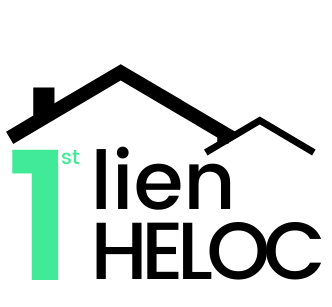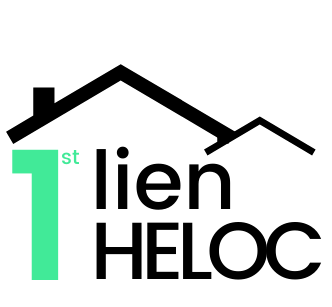
Real Estate Developers
Welcome to our Real Estate Developers group!
Step into our Real Estate Developers group &... View more
Group Description
Welcome to our Real Estate Developers group!
Step into our Real Estate Developers group & forum discussions to connect with visionaries transforming landscapes and communities. Exchange ideas, discuss trends, and uncover opportunities in this vibrant hub for development professionals.
Using a First Lien HELOC as Capital for Real Estate Development
-
Using a First Lien HELOC as Capital for Real Estate Development
Posted by FLH Team on March 21, 2024 at 5:04 pmAre you a real estate developer considering using a First Lien Home Equity Line of Credit (HELOC) to fund your next project? Join our forum discussion to explore the potential of this financing option, share experiences, and learn from fellow developers who have successfully utilized First Lien HELOCs for their ventures.
Peggy Joseph replied 1 year, 6 months ago 7 Members · 8 Replies -
8 Replies
-
Hey everyone,
I’m exploring financing options for my upcoming real estate project, and I’m considering using a First Lien HELOC as a funding source. I’ve heard it could be a smart move, but I’d like to learn more about it.
Here are a few questions I have:
1. Has anyone here ever used a First Lien HELOC for real estate projects? If so, how did it work out for you?
2. How does using a HELOC compare to more traditional methods of financing real estate ventures?
3. What are some of the main benefits of using a First Lien HELOC for real estate development?
4. Are there any potential downsides or risks associated with this approach that I should be aware of?
5. Can someone walk me through the process of obtaining and utilizing a First Lien HELOC in simple terms?
Just hoping to get some insights and advice from those who have experience with this, thanks! -
So, when it comes to financing real estate, a lot of folks default to traditional mortgages without giving much thought to other options like a 1st lien HELOC. At first, it might not seem all that exciting, but once you start digging into the nitty-gritty details, you realize they offer some pretty cool perks.
First off, FLEXIBILITY!!! With flh, you’ve got access to the equity in your home whenever you need it. So, if you spot a killer investment opportunity or stumble upon a fixer-upper, you can dip into your equity without jumping through all the hoops of applying for a loan. This flexibility has been a game-changer for me, especially when I wanted to jump on good deals in the real estate market.
Another big plus is the ability to get creative with your finances. Yyou can offset interest onto 0% credit cards or use other financial tools like 401k loans, bonuses, or inheritance money to maximize your returns. By strategically managing your money, you can save on interest and pay down your debt faster.
One thing I really like about 1st liens is how the minimum payment decreases over time. Unlike a mortgage where your payments stay the same, with a HELOC, your minimum payment goes down as you pay off the balance. It’s a nice safety net knowing that even if times get tough, you’ve still got a lower payment to fall back on. Plus, unlike with a mortgage, where your money feels kind of locked away, a HELOC lets you access your equity more easily if you need it.
Speaking from my own experience, I’ve got two properties: one with a regular mortgage and the other with just a 1st lien HELOC. The other is a mortgage at a 5.625%, 30 year fixed. This should be a really good discussion!
-
So, here’s the plan: buy a rental property and then use its cash flow to pay down its 1st lien HELOC instead of having a traditional mortgage. This way, you can quickly build up equity in the property, lower your monthly payments, and have a stash of cash ready for your next investment or to pay off the property faster if you’re not looking to take on more debt. It’s like setting up a solid financial safety net with low risk and a steadily decreasing minimum payment, plus easy access to your equity when you need it.
Another perk of having a HELOC in 1st position is that it’s less likely to get frozen during tough economic times. See, banks often freeze HELOCs because they’re usually in 2nd position behind a mortgage, which means they’re more vulnerable if home prices drop and the property goes into foreclosure. But with a 1st lien HELOC, you’re in a stronger position because you have first dibs on any sale proceeds.
Sure, HELOC interest rates might be higher than a mortgage, but it’s all about playing the long game. I’m surprised nobody’s really delved into the nitty-gritty of HELOCs on these forums. There are definitely pros and cons, but they’re worth discussing further for sure.
-
AGREED!!! First lien HELOCs can offer significant advantages over traditional mortgages, but it’s crucial to use them wisely. One smart move is to shift all your banking activities—like deposits and withdrawals—through your HELOC instead of your regular bank account. This way, any extra cash you have at the end of the month can go straight into paying down your HELOC balance faster. Plus, you’ll still have available funds for those spontaneous investment opportunities that come your way.
When used this way, I can demonstrate a direct comparison that proves the HELOC will outperform any fixed-rate product. The key here is to have more money going in than coming out. Instead of stashing your savings in a regular account, you leave it in the HELOC, and that makes all the difference.
If you can leverage your HELOC like this, you’re not just getting a better mortgage; you’re gaining a versatile tool that can serve you well for years to come, all without the hassle of having to re-qualify for a new mortgage every time you need funds.
-
REMEMBER: “”You will have a tool that can be used for many years, all without having to re-qualify for a new mortgage every time you need some money””
Think about it—your equity is your hard-earned money. So why let banks leverage it when you could be doing that yourself? With a mortgage, your equity is stuck and can only be accessed at a hefty cost. But that’s a thing of the past. If you use your equity to put money into your pocket instead of taking it out, you can steadily build equity and wealth over time.
I truly believe that leveraging a HELOC, along with investing in cash flow rental properties, is like having the missing piece of the puzzle for building genuine wealth. Without the HELOC equity-building strategy, you might be doing okay, but you’ll still have a significant leak in your wealth-building bucket, and the banks will be there to catch every drop. 🙂
-
PLUS 1 here! Your HELOC acts like a reserve for future purchases while also saving you a substantial amount of interest along the way—a sort of reverse investment. I understand the importance of minimizing your upfront costs when buying properties to reduce risk. However, it’s also crucial to avoid being overleveraged in case the market takes a downturn.
-
This discussion is really good!!! I also vote for the heloc!
If you are still weighing things, take this scenario where we go through the ups and downs of a real estate market cycle. You’ve got a bunch of rental properties financed through first lien HELOCs (no mortgage). When the economy is booming, your properties are cash-flowing positively. You take all the rent payments from tenants (covering PITI plus your cash flow) for any property with a HELOC and use it to pay down the balance of what you owe on the HELOC (and handle taxes and insurance automatically).
What’s the result? Well, first off, you’ve lowered your monthly HELOC payment due. Yep, you heard that right—your minimum payment due on the HELOC is reduced (and it keeps going down over time). This boosts your cash flow from that property, giving you the smart options to either keep channeling your tenants’ payments into the HELOC (saving loads on interest charges) or snag more properties.
Now, let’s talk recession. You’re flexible and secure to ride out the storm. Check out your options:
You only need to cover the interest to avoid losing your property (can’t do that with a mortgage, and refinancing during a downturn might not work).
You’ve prepaid principal with your cash flow, building up forced equity and saving loads in interest compared to a 30-year mortgage. I’ve seen it happen!
Your interest-only payment decreases over time automatically (thanks to your cash flow reducing your principal balance). HELOCs adjust daily.
If needed, you can use the HELOC to cover the payment due and then pay back the HELOC with a minimum payment (not the best idea, but it’s an option). Your goal, though, is always to pay more than the minimum and chip away at that balance!
Over time, you’ll slash your debt term significantly, turning a 30-year term into a 5-10 year debt. At payoff, your cash flow skyrockets, and you’ve ramped up your wealth creation. Plus, your property appreciates, and rents increase. Throw in tax benefits, and you’re paying next to nothing in taxes.
I don’t see much risk in this strategy alongside BRRRR to speed up your path to wealth.
-
I’m really enjoying this discussion. I’m a huge advocate for using HELOCs to buy investment properties, and I’ve done it several times myself. In the past, I’ve always had HELOCs in second lien positions behind traditional 30-year mortgages. But now, I’m interested in having a HELOC in the first lien position instead.
Log in to reply.

